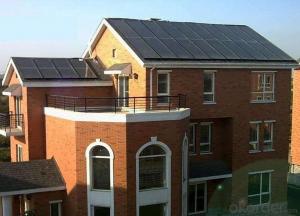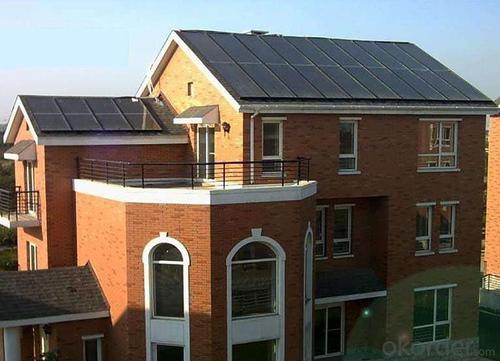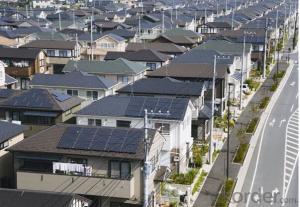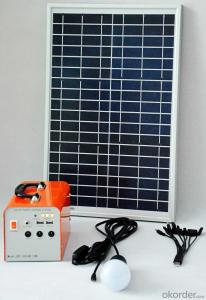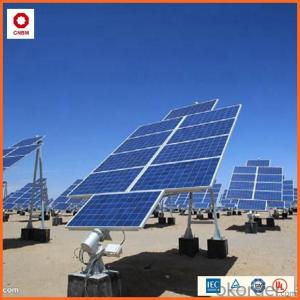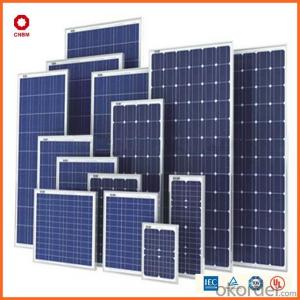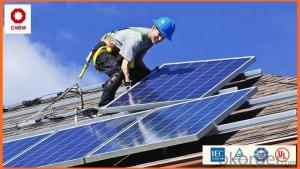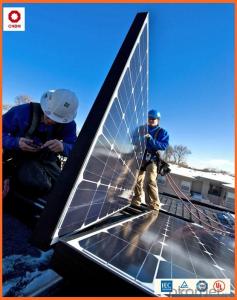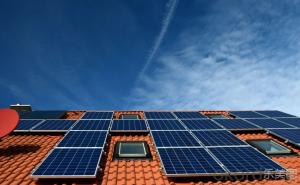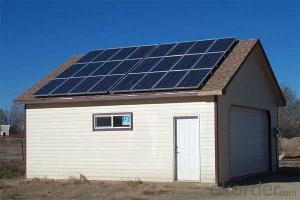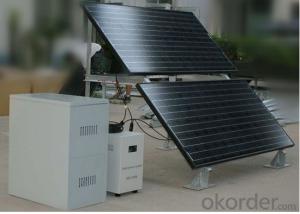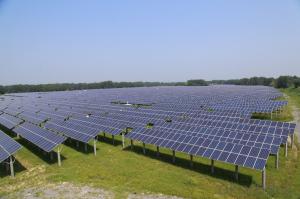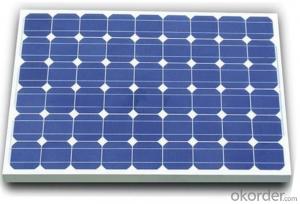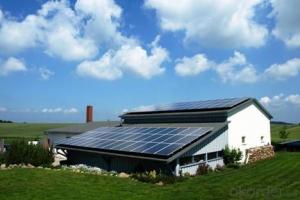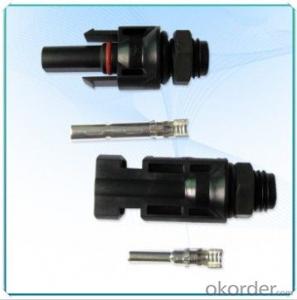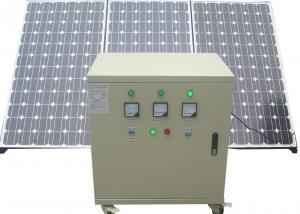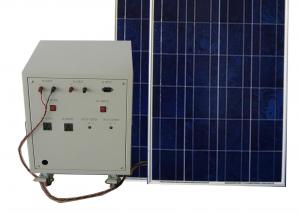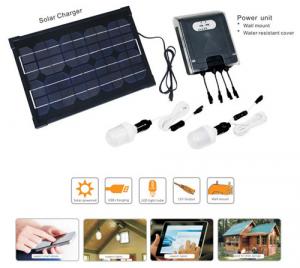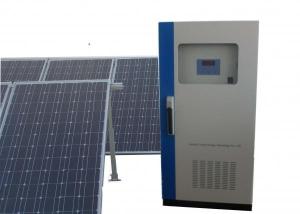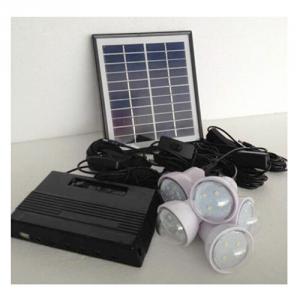25kw Solar Off-Grid Power System - Solar Energy Systems Bowral
- Loading Port:
- China main port
- Payment Terms:
- TT OR LC
- Min Order Qty:
- 1 set
- Supply Capability:
- 500 set/month
OKorder Service Pledge
OKorder Financial Service
You Might Also Like
Specification
1. Technical parameters of 5kw Solar Off-grid Power System 25KW
-Solar panels
Power(Pmax): 380 Wp
Dimension: 1956x992x40 mm
Working Voltage(Voc): 44.6V
Working Current(Imp):9.32A
Weight: 23 kg
- PV Inverter with controller
Efficiency: >85%
Pure sine wave
AC 220V/380V 50/60Hz output
Working Temp: 0℃~40℃
Battery overvoltage protection,undervoltage protection,overload protection,short circuit protection, overtemperature protection,etc.
900*700*1750mm 315KG
-Mounting Bracket
Flat roof or Ground: Galvanized steel type;
Tile roof: Aluminium type
Wind Load Resistanc: 45m/s
Snow Load: 2kN/m2
-GEL Battery of 12V 250Ah
520*269*228mm 68.5KG
-DC Cables
PV1-F
TUV/UL certificates
2. Products images
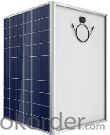
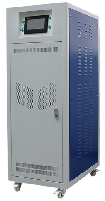
3. Product list
| No. | Item |
| 1 | Solar Panels |
| 2 | PV Inverter with controller built-in |
| 3 | Controller |
| 4 | Mounting racks |
| 5 | DC Cables |
| 6 | AC Cables |
| 7 | MC4 Connectors |
| 8 | GEL Battery |
| 9 | Combiner Box |
| 10 | Distribution box |
4. Remark
- In rainy days, the battery can support10000W load work 13hours.
-The maximum power load should not exceed 10.5KW (including inductive load impact: such as refrigerators, air conditioners, washing machines, etc. with motor load).
- The battery can be fully charged in 10-12hours under STC sunshine condition.
5. Package
Wooden case or carton pallet packing


- Q: Can solar energy systems be used in areas with high levels of wildlife activity?
- Yes, solar energy systems can be used in areas with high levels of wildlife activity. While it is true that wildlife can pose some challenges for solar energy systems, there are several ways to mitigate these issues. One of the primary concerns is the risk of damage to the solar panels by large animals or birds. However, there are various protective measures that can be taken to prevent this. For instance, installing fencing or barriers around the solar panels can help keep wildlife away. Additionally, using anti-reflective coatings on the panels can reduce the likelihood of bird collisions. Another concern is the impact of solar energy systems on wildlife habitats. It is crucial to choose the location of the solar panels carefully, considering the existing wildlife activity in the area. By conducting thorough environmental impact assessments and engaging with local wildlife experts, it is possible to minimize any potential negative effects on wildlife habitats. Moreover, solar energy systems can actually benefit wildlife in some cases. For example, solar farms can provide additional shelter and shade for some species, and the open spaces underneath the panels can create new habitats for ground-dwelling animals. Overall, while there may be some challenges, with proper planning and mitigation strategies, solar energy systems can be successfully utilized in areas with high levels of wildlife activity.
- Q: Can solar energy systems be installed on schools or educational institutions?
- Yes, solar energy systems can be installed on schools or educational institutions. In fact, many schools and educational institutions have already adopted solar energy systems as a way to reduce their carbon footprint, save on energy costs, and provide real-life examples of renewable energy to students. These systems can be installed on rooftops, parking lots, or open spaces, depending on the available area and energy requirements of the institution.
- Q: What is the system voltage of solar panels
- System voltage refers to the number of solar panels composed of a solar power generation system, the maximum DC voltage of the power system.
- Q: What is the impact of electromagnetic interference on solar energy system performance?
- Electromagnetic interference can have a negative impact on the performance of solar energy systems. It can cause disruptions and fluctuations in the electrical signals and data transmission within the system, leading to reduced efficiency and reliability. Additionally, electromagnetic interference can interfere with the proper functioning of inverters and other critical components, potentially causing system failures and downtime. Therefore, it is crucial to implement proper shielding and mitigation measures to minimize the impact of electromagnetic interference on solar energy system performance.
- Q: Can solar energy systems be used in powering warehouses or distribution centers?
- Solar energy systems are indeed capable of powering warehouses and distribution centers. Many businesses are increasingly adopting solar energy as a sustainable and cost-effective solution for their energy requirements. Warehouses and distribution centers, being large facilities with ample roof space, are ideal candidates for solar panel installations. By installing solar panels on the roof or ground of these facilities, the solar energy generated can be utilized to power various operations within the warehouse or distribution center. This includes lighting systems, climate control, refrigeration units, conveyor belts, and other machinery or equipment. The energy generated can also be stored in batteries for later use during cloudy days or at night. There are several advantages that make solar energy systems a perfect fit for warehouses and distribution centers. Firstly, solar power helps reduce dependence on the traditional grid, resulting in lower electricity bills and long-term cost savings. Additionally, since solar energy is a renewable and clean source, its use reduces greenhouse gas emissions and contributes to a more sustainable business operation. Besides the cost and environmental benefits, solar energy systems offer businesses energy independence and resilience. By generating their own power, warehouses and distribution centers are less susceptible to power outages or fluctuations in the grid, ensuring uninterrupted operations and minimizing downtime. In conclusion, the use of solar energy systems in powering warehouses and distribution centers offers numerous advantages, including cost savings, sustainability, energy independence, and operational resilience. Consequently, an increasing number of businesses are embracing solar energy as a reliable and efficient solution for their energy needs in these types of facilities.
- Q: How does the efficiency of solar panels vary based on the cleanliness?
- The cleanliness of solar panels can impact their efficiency. When solar panels are free from dirt, dust, or debris, they are able to capture more sunlight and convert it into electricity more effectively. Clean solar panels are less likely to be obstructed by dust particles, which can limit their ability to absorb sunlight. Furthermore, a buildup of dirt or grime on the surface of solar panels can create a barrier that blocks sunlight from reaching the photovoltaic cells, thus reducing their efficiency. To ensure optimal performance, it is crucial to regularly clean and maintain solar panels. By keeping them clean, their efficiency can be maximized, resulting in improved electricity generation. It is advisable to periodically clean solar panels, especially in areas with high levels of dust or pollution, or during seasons when there is an increased presence of pollen or debris in the air. By doing so, the solar panels can continue to operate at their highest efficiency, leading to increased energy production and overall system performance.
- Q: Can a solar energy system be installed on a building with a flat roof?
- Yes, a solar energy system can be installed on a building with a flat roof. Flat roofs provide an ideal surface for mounting solar panels, as they offer a level surface and provide ample space for installation. Furthermore, flat roofs often have unobstructed sun exposure, which is crucial for maximizing the efficiency of solar panels.
- Q: What is the payback period for a solar energy system?
- The payback period for a solar energy system is the time it takes for the system to generate enough savings on energy costs to recoup the initial investment. This period can vary depending on factors such as the cost of the system, location, government incentives, and energy usage. On average, the payback period for a solar energy system ranges from 5 to 10 years.
- Q: Can a solar energy system be installed in areas with low sunlight?
- Yes, a solar energy system can be installed in areas with low sunlight. While it is true that solar panels generate more electricity in areas with high sunlight exposure, they can still function and provide a certain amount of energy in areas with lower sunlight. Additionally, advancements in solar technology have improved the efficiency of panels, allowing them to generate electricity even in cloudy or overcast conditions. It is important to assess the specific conditions and available sunlight in a particular area before installing a solar energy system to ensure optimal performance and energy production.
- Q: Do solar panels work on cloudy days?
- Yes, solar panels do work on cloudy days, although their efficiency is reduced. While direct sunlight is optimal for generating electricity, solar panels can still convert diffuse sunlight into energy, albeit at a lower rate.
Send your message to us
25kw Solar Off-Grid Power System - Solar Energy Systems Bowral
- Loading Port:
- China main port
- Payment Terms:
- TT OR LC
- Min Order Qty:
- 1 set
- Supply Capability:
- 500 set/month
OKorder Service Pledge
OKorder Financial Service
Similar products
Hot products
Hot Searches
Related keywords
